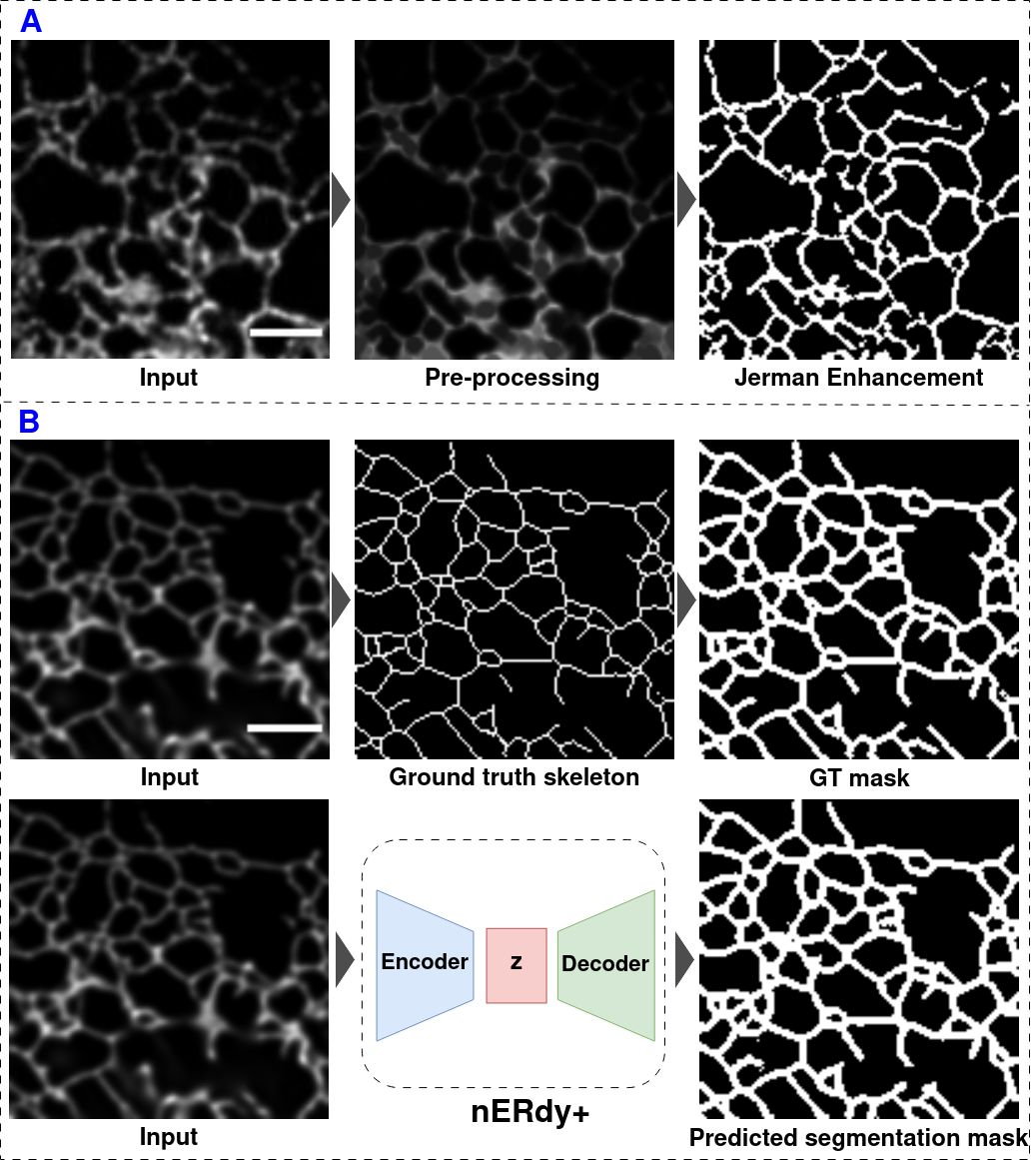This repository provides code for training, inference of endoplasmic reticulum segmentation method nERdy+, and the analysis of the dynamics presented in the paper nERdy: network analysis of endoplasmic reticulum dynamics.
Ashwin Samudre, Guang Gao, Ben Cardoen, Ivan Robert Nabi, Ghassan Hamarneh
Pre-print: https://www.biorxiv.org/content/10.1101/2022.05.17.492189v1
The endoplasmic reticulum (ER) comprises smooth tubules, ribosome-studded sheets, and peripheral sheets that can present as tubular matrices. ER shaping proteins determine ER morphology, however, their role in tubular matrix formation requires reconstructing the dynamic, convoluted ER network. Existing reconstruction methods are sensitive to parameters or require extensive annotation and training for deep learning. We introduce nERdy, an image processing based approach, and nERdy+, a D4-equivariant neural network, for accurate extraction and representation of ER networks and junction dynamics, outperforming previous methods. Comparison of stable and dynamic representations of the extracted ER structure reports on tripartite junction movement and distinguishes tubular matrices from peripheral ER networks. Analysis of live cell confocal and STED time series data shows that Atlastin and Reticulon 4 promote dynamic tubular matrix formation and enhance junction dynamics, identifying novel roles for these ER-shaping proteins in regulating ER structure and dynamics.
In the figure above, A shows the nERdy method, and B shows the nERdy+ method.
The tiff files for the data presented in this work can be downloaded from here.
nERdy provides a set of morphological image processing operations for the segmentation of tubular structures from the input ER samples.
To use nERdy as a simple baseline on your custom dataset, simply provide the path of the input image file, and nERdy saves the segmentation output in the same path as the input file path. The morphological image processing parameters can be tuned as per the requirements of your custom data.
nERdy+ is a D4-equivariant encoder-decoder network trained to segment the tubular structures from input ER samples.
Data: In your data directory store the images and masks in individual subdirectories. Masks are expected to have the same name as the corresponding input image followed by a _mask suffix.
Trainer: provide the data path and set other hyperparameters in the config.ini file and run train.py
Inference: provide the saved model path in inference.py to obtain the output segmentation map.
Analysis framework: scripts for junction analysis pipeline and to generate all the results in the paper
junction_analysis script provides the routines for dynamics analysis presented in the paper. Our dynamic analysis framework is method-agnostic and can be plugged with other methods for segmentation apart from nERdy+.
If you find this article useful, please cite
@article{samudre2024nerdy,
title={nERdy: network analysis of endoplasmic reticulum dynamics},
author={Samudre, Ashwin and Gao, Guang and Cardoen, Ben and Nabi, Ivan Robert and Hamarneh, Ghassan},
journal={bioRxiv},
pages={2024--02},
year={2024},
publisher={Cold Spring Harbor Laboratory}
}

